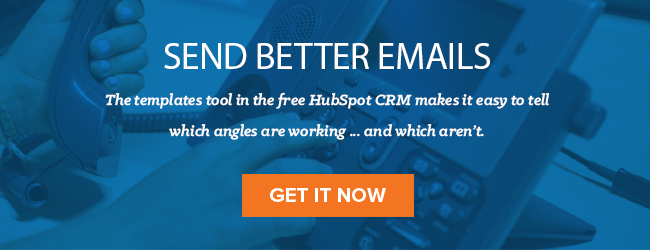Best Regards vs. Kind Regards: How to Use Them Each in an Email
You write a masterful email. The subject line is uber-clickable. Your greeting is friendly without being overly familiar. And then you get to your sign-off. “Thanks” is too generic, “Sincerely” is too formal, and “Cheers” seems tired.
“Best regards” and “Kind regards” are two of your best options for business email signatures, but it can be difficult to know how to use each correctly. To avoid bad first impressions or email faux pas, I’ve created a quick-and-easy guide for when and how to use each one, so your emails are always appropriate and grammatically correct.
Best Regards vs. Kind Regards
“Best regards” is the less formal version of the two. It’s a safe, friendly, and respectful sign-off to clients you’re familiar with but not yet well-acquainted. It’s a neutral sentiment that communicates respect and appreciation without claiming to have a relationship beyond what you’ve built with your prospect, client, or colleague. Here’s a list of scenarios in which you’d use “Best regards”:
- When emailing existing clients
- When speaking with vendors you’ve worked with for 3+ months
- When communicating with prospects you’ve engaged in regular, two-sided conversation with
- When reaching out to colleagues within your organization
- Any time the other party sets a more casual tone over email
And here’s an example of how to use “Best regards” in an email:
Hello Jay,
Here’s that case study we were discussing yesterday. It should answer your question about how BG Solutions can streamline your accounting process by integrating with your existing software.
Please let me know if you have any questions.
Best Regards,
Dee

“Kind regards” is a more formal variation of this sign-off. You might reserve it for introductory, outreach, or exploratory emails. It still communicates respect but intuits less of an established relationship. Here are a few scenarios in which you would use “Kind regards”:
- When conducting warm outreach
- When in the early stages of communicating with prospects (especially if they haven’t responded to your emails)
- When emailing an executive at any company, any time
- When introducing yourself to a mutual acquaintance of a friend or colleague
- When you’re uncertain which sign-off to choose
And here is an example of how to use “Kind regards” in an email:
Hello Jay,
I noticed you downloaded our most recent case study about how BG Solutions helped streamline the accounting operations of enterprise company Stillwater Inc.. If you have any questions about that study, I’d be happy to answer them.
Kind Regards,
Dee

When you’ve built rapport and a closer working relationship with a business associate, it might be appropriate to drop the “Kind “and “Best “entirely and just send “Regards,” though some experts feel this is colder rather than more familiar.
Regardless, it is the most informal version of the sign-off and denotes the closest kind of working relationship. Reserve this for clients or colleagues with whom you work regularly and whose email tone and style you understand, and vice versa.
When in Doubt, Match the Customer’s Tone
Still not sure which one to use? As a rule of thumb, match the formality in your business associate’s tone. If they’ve signed their last email “Best wishes,” reply with the same signature or substitute “Best regards.” If they’ve used a more formal signature like, “Sincerely,” err toward “Kind regards,” as it matches the tone and sentiment your associate has used.

![]()
[ad_2]


